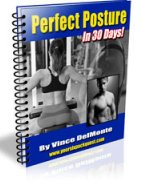Getting Fit with Exercise Balls
Exercise balls (or physio balls) are one of the most versatile exercising tools that you can find in the market today. While it may seem like a kid's toy at first look, it brings a number of exercise benefits, which most of the bulky exercise machine; may fail to offer. It provides a perfect opportunity to get in shape, whatever the demands of one's lifestyle could be.
Whether it is balance, flexibility, strength, cardiovascular fitness, coordination or neuromotor training that you need to work on, this simple tool covers everything you need to do just that.
The exercise ball was first developed in 1963 by an Italian plastic manufacturer, Aquilino Cosani. He developed puncture resistant plastic balls, which were used by the treatment programs that are now used with newborn babies and infants.
Later on, this ball was integrated with physical rehabilitation exercises, treating adults with orthopedic problems or those who are recovering from serious physical injuries.
From its development in clinical setting, the (now) exercise ball was later on used in athletic training, taking part of the general fitness routine. (Cool, huh?)
The Fitness Exercise Ball with Many Names
An exercise ball has many names. Fitness balls, Swiss exercise balls, core exercise balls, and Chinese exercise balls are just few of the terms that are interchangeably used with exercise ball. This may be because of its origin or because of its integration to a number of exercises. Since these balls promote fitness, they are typically called fitness balls.
The exercise ball chair and weighted exercise balls are modified versions of the original exercise ball, and they are used for various fitness routines.
Swiss Exercise Balls - Popular Brands
This exercise tool is usually made from vinyl, plastic or solid foam rubber, depending on the ball design and manufacturer. TheraBand makes inflatable balls of patented burst-free and puncture-proof material
material. Danskin supplies exercise balls
that are specifically designed for active women.
Nike, a well-known sports brand, makes its exercise ball with textured surface for solid grip and durable rubberized material construction to make them perfect for indoor and outdoor exercises.
Dynaflex provides high-quality exercise balls with additional workout video. Everflex offers quality 45 to 66-centimeter diameter of fitness exercise balls. Izzo is a brand that specializes in core balance exercise balls.
Other noteworthy ball brands include BodyTrends Anti-Burst Fitness and Altus.
Continue to Part 2 - Getting Fit With the Fitness Exercise Ball - Benefits, Applications, and Pros / Cons





